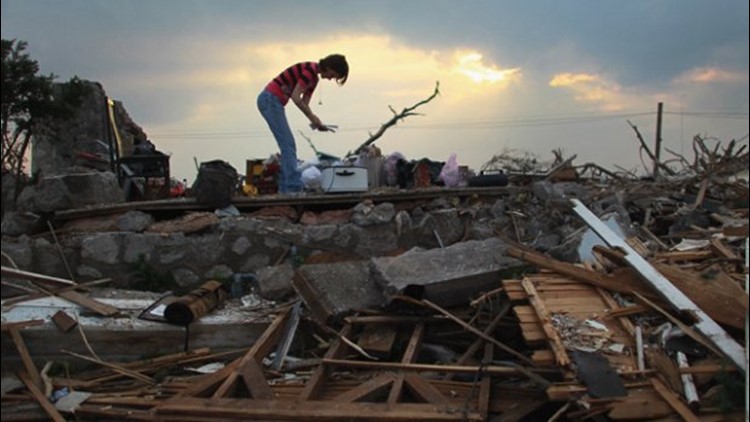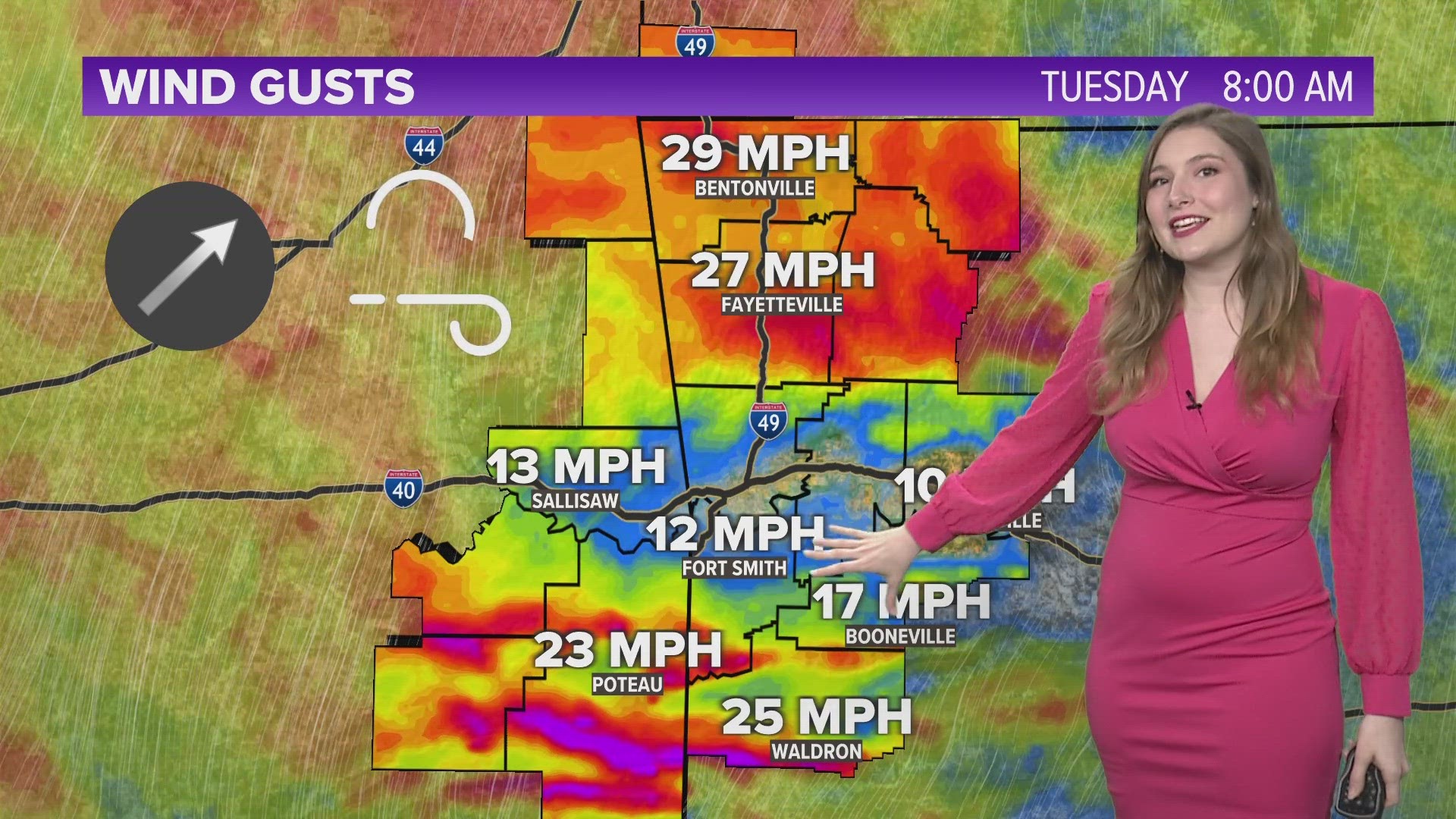I thought it would be interesting to share with you my severe weather philosophy and the way I cover storms at Channel 5.
This is what I repeat in my mind over and over during critical severe weather; and what I strive to do when bad weather hits:
“Give you the best information so you can make the best decision to protect yourself, your family, & your friends.”
For me, that’s a process that works like this:
- Where is the worst storm?
- Where exactly is the rotation?
- What street?
- Who is seeing it next?
- Will this be a small spin up tornado? Or a large violent one?
- When will it end?
- What can they expect when it hits?
Weather Coverage On-Air & Online
Every storm and tornado is different and requires different levels of coverage. There are nights like last week when Joe, Tyler, & I stayed on the air for over 6 hours during the night because storms were still in area. They weren’t severe but they made a lot of noise and caused isolated damage and there aren’t a lot of people tuning in at 3am on Saturday morning anyway so we continued with coverage.
High audience programming like a Thursday night at 7pm requires additional considerations. Occasionally there are tornado warnings that are issued for a storm with strong rotation on 1 scan then it becomes disorganized and falls apart. Even though the warning is still in effect for another 30-45min, I’ll usually go back to programming. There’s no sense in me rambling on and on about a storm that’s no longer dangerous; even if the sirens in your town are still sounding for the next 30min. We will roll crawls non-stop and cut-in during commercials to let you know what’s happening.
On the flip side, I have covered up prime time programming for a storm with no tornado warning but the storm was clearly capable of damage or even a tornado. I usually will not wait on the National Weather Service to issue a warning. My management at 5NEWS have tasked me with the following statement: “We cover storms whenever life and property are in danger in our area. Regardless of the hour or the programming”. I take that statement a step farther and look to “give you the best information about the storm so you can make the best decision to keep yourself safe”. Not only you, but my Mom & Dad are watching too, my Wife and Son, my sisters… It’s personal when storms are severe in our area.
So what is our area? Nielsen Television has assigned the following counties to us: Benton, Washington, Madison, Crawford, Sebastian, Sequoyah, LeFlore, Logan, Scott, Franklin, & Johnson. We realize we have a large audience in Russellville, Mena, & Eureka Springs and work to cover those areas when tornadoes are affecting those locations even though they are not assigned to us.
On the same note, I try to cover storms about an hour before they move into our area. This means I will not breathlessly cover storms for 3 hours while they’re in Tulsa or McAlester. If they’re moving in, and they’re about an hour away… we’ll cover them. I received a note once from a viewer that said “My time is valuable, don’t waste it” and I think of that often. If you want more coverage, often we’re streaming on 5NEWSonline.com or on KXNW 34 during borderline severe storms. Basically, storms that are loud but will not do any damage. Every situation is different and there isn’t a “hard and fast rule” for covering storms. Many stations believe in the “first on… last off” philosophy but frankly I get tired of repeating myself for a storm that isn’t an immediate threat to life or property.
In general, we ramp up storm coverage with severity and pull back storm coverage when the threat lowers. Many times the storms will produce tornadoes in East Oklahoma and across the Arkansas/Oklahoma line and then form a line with a low tornado risk as they move east towards Clarksville and Russellville. But every situation is different, the tornado that affected Altus/Denning and Clarksville back in 2011 actually ramped up over Charleston. Because of the large area we cover we occasionally get complaints that a storm “is only affecting Denning and not Northwest Arkansas” or conversely “that storm is in Bentonville, only cut in when it’s in Fort Smith”. When life or property are in danger, I realize it’s an inconvenience to miss programming and we will make every effort to re-air the programming at a later time or provide you with a link to watch the missed programming online.
Tornado Survival
There has been much controversy about weather anchors in Oklahoma City last week telling people to “Leave now! Drive south, and get out of the tornadoes way!” so I think it’s worth recapping basic and simple tornado safety advice:
“Get to the smallest, middle room, on the lowest floor… and put as many walls between you and the outside as possible. Get as low as you can.”
Yes, you can survive an EF4 or EF5 tornado above ground, but the reality is… after a decade at 5NEWS I’ve only covered 1 EF4 and that was in Altus/Denning in 2011. In fact, over 98% of all tornadoes are EF0-EF3. They’re strong tornadoes with lots of damage but generally leave the middle of most homes intact. Even within the EF5 tornadoes like in Joplin, MO about 80% of the damage was in the EF0 to EF3 range with only a handful of structures with EF5 damage. EF5 damage does not go the entire length of the damage path. Following basic steps will save your life the majority of the time.
Mobile homes, even the newer manufactured homes, can be destroyed in as little as an EF0. All mobile homes are destroyed at EF2 even if they’re anchored to the ground. A “well-built structure” is a home with joists that attach the outer wall framing and 2x4s into the concrete foundation. If you live in a manufactured home with a concrete foundation and walls secured to the foundation it will offer more protection.
If you feel the need to flee in a vehicle you should only do so if you have enough time and before the warning is issued. In my opinion, this should only be people in a mobile home with no nearby building to take shelter. The majority of tornado deaths occur in mobile homes. If you’re in a rural area with no traffic you may be tempted to leave. But remember it’s far more dangerous to be trapped in traffic with a tornado coming at you than in the middle part of a home.
If you’re using school or community shelters, remember that if you can’t get to one within 5 minutes you could risk being locked outside of the shelter during the tornado. This happened a few years ago in Tushka, Oklahoma when a husband, wife and their 2 kids clung to a white metal rail during an EF3. The tornado blew the car up against them and it actually blocked the debris and saved their life. You do no want to be outside or in a car when a tornado arrives.
Tornadoes rarely hit without warning and are mentioned in severe weather outlooks, watches, and warnings giving you days of ‘heads up time’ before they hit.
The best advice is to practice situational awareness. Be aware of what’s happening. Download our App to watch live coverage. Buy a weather radio. And as my Mom used to always tell me: “Just stay alert and you won’t get hurt.”
-Garrett



